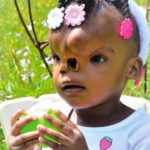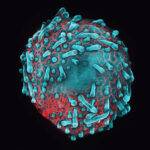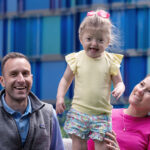A kiss from their sister: A family’s journey with cleft lip care
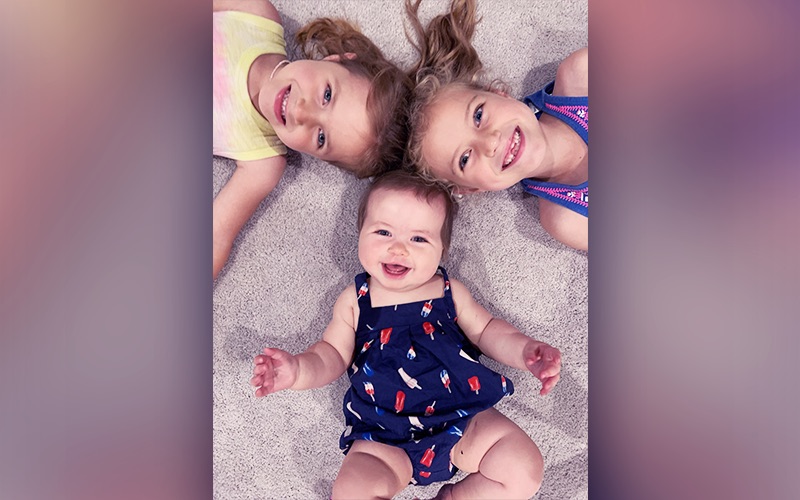
Kelly and Ben’s experience with cleft lip care at Boston Children’s Hospital spans multiple years and multiple children.
Two of their daughters, Molly and Annie — five years apart in age — were born with an incomplete unilateral cleft lip. The couple won’t shy from admitting that receiving the diagnosis doesn’t get easier.
“It’s a roller coaster of emotions,” Ben says.
One-in-a-million odds
A cleft lip or palate is the most common congenital craniofacial difference in the world. Yet, in the United States, the odds of having a child born with a cleft lip (without a cleft palate present) are about 1 in 2,800.
“I just couldn’t believe we fell into that small percentage,” Kelly says.
What is a cleft lip?
A cleft lip is a visible separation in the skin of the top lip. The space can be small or it can be a significant opening that extends from the base of the nose to the top jaw and gums.
Learn more about the symptoms and causes.
Kelly and Ben had lost their first child, Lucy, at birth in 2014. Therefore, as a precautionary measure, Kelly’s pregnancy with Annie in 2015 was closely monitored by her maternal-fetal medicine team. Despite extensive prenatal care that included multiple ultrasounds, Annie’s cleft was not detected before her birth.
“After losing Lucy, we were anxious throughout the pregnancy with Annie,” says Ben. “And then we were hit with the surprise of her cleft lip when she was born.”
Like it never even happened
Surgery to repair a cleft lip typically occurs between 3 and 6 months of age. Annie underwent her cleft-repair surgery at 6 months old under the care of Dr. Carolyn Rogers-Vizena of the Department of Plastic & Oral Surgery.
“One of our biggest areas of focus when operating on cleft lips — or any craniofacial surgery — is aligning facial structures in such a way that they can grow appropriately along with the child,” says Dr. Rogers-Vizena.
To give each child the best possible assurance that they will grow and thrive along with their peers, the Cleft Lip and Palate Program at Boston Children’s comprises a team from not only plastic and oral surgery, but also from otolaryngology, audiology, speech-language pathology, dentistry, and genetics. Together, the team helps enhance the facial appearance, speech, hearing, and overall development of children with cleft lip and palate.
Annie made a swift recovery from her cleft repair, latching to breastfeed within hours of surgery. Within days, she was at home and happy.
“It was just amazing what the team did for her,” Kelly adds. “But we did miss her cleft smile.”
“She is such a resilient kid. She just moved right through it, and a few weeks past surgery, we were back to our routine like it never even happened.”
– Kelly (Mom)
A new sister for Annie
Kelly became pregnant again when Annie was 15 months old. Given their history, this pregnancy was also closely monitored, with multiple ultrasounds paying close attention to potential signs of a cleft lip.
“It eventually became clear that [the baby] didn’t have one,” Kelly remembers.
Their daughter Natalie arrived in the summer of 2017.
Lightning striking twice
Kelly found out she was pregnant with Molly in the winter of 2019. Given that their previous pregnancy with Natalie had gone routinely and without any cleft findings, she and Ben were optimistic that the same would be true for Molly.
At her 20-week ultrasound — already uneasy due to COVID-19 restrictions requiring her to go to the appointment alone and not having her usual maternal-fetal medicine team available — Kelly wasn’t prepared to hear that the ultrasound detected that Molly too had a cleft lip.
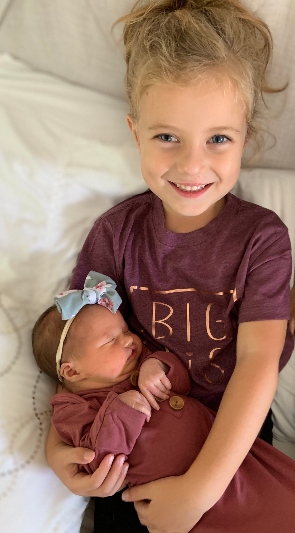
“At that moment, I was just a wreck,” she adds. “I knew we’d have to face another surgery with our baby, and I had so many questions as to how severe the cleft was. It was difficult to hear, but we knew we had another four months of the pregnancy to process it and prepare for what was to come.”
Following an MRI and ultrasound with the Boston Children’s Maternal Fetal Care Center, Kelly’s care team determined that, like Annie, Molly had a moderately-sized unilateral (present on one side) cleft lip. Having this diagnosis early helped Kelly and Ben prepare for what was in store.
“Even though it made for a more nerve-wracking pregnancy — especially given our history with losing Lucy and the pandemic making everything feel more dangerous,” Ben says, “Knowing about the cleft lip ahead of our delivery allowed us to enjoy Molly for Molly on her birthday.”
Dr. Rogers-Vizena and her team performed Molly’s cleft-repair surgery in January 2021, and today Molly is a happy-go-lucky 11-month-old who loves to giggle and keep up with her older sisters.
“She’s an easygoing baby girl,” Kelly says.
Your sister left you a kiss
Both Annie and Molly were left with minimal scarring. Still, Kelly and Ben are prepared for any questions their girls may have about their experience.
“We tell them, ‘your angel sister, Lucy, left you a kiss on your lips when you were born,” Kelly says. “She is always with you.’”
Find out more about the Cleft Lip and Palate Program.
Related Posts :
-

Violet is blossoming five years after Tessier cleft surgery
In October 2014, Violet and her parents traveled from their home in rural Oregon to Boston Children’s Hospital for a ...
-

A rare diagnosis: Zoey's new smile
Zoey Alford’s favorite TV show is Vampirina, the animated tale of a little blue-skinned vampire trying to fit in ...
-

Skin organoid could guide new treatments for skin conditions, hair loss
What does it take to build healthy skin? Two research groups converged on this question from different angles. They've now ...
-

No labels or limits with Apert syndrome: A letter to parents
Dear parents, If you’re reading this, your child might have been recently diagnosed with Apert syndrome and you don’...



